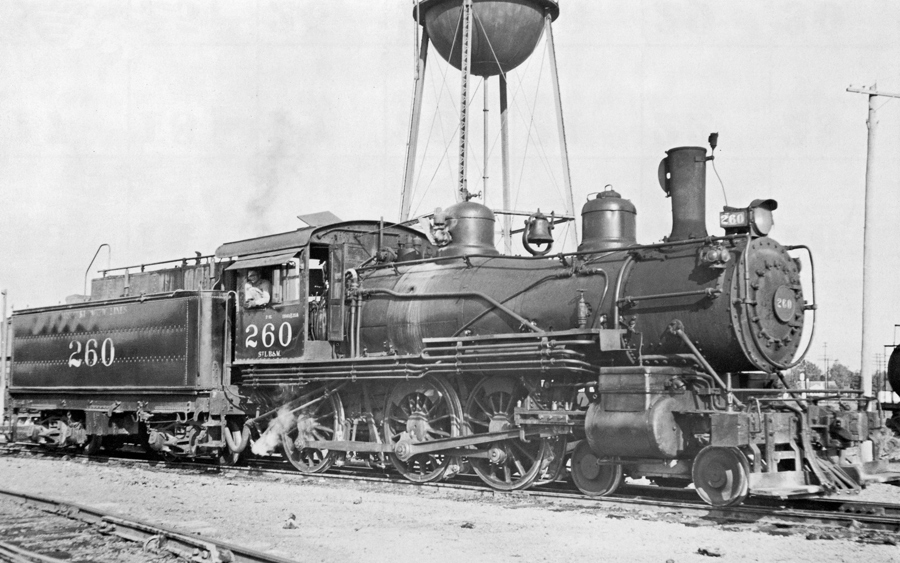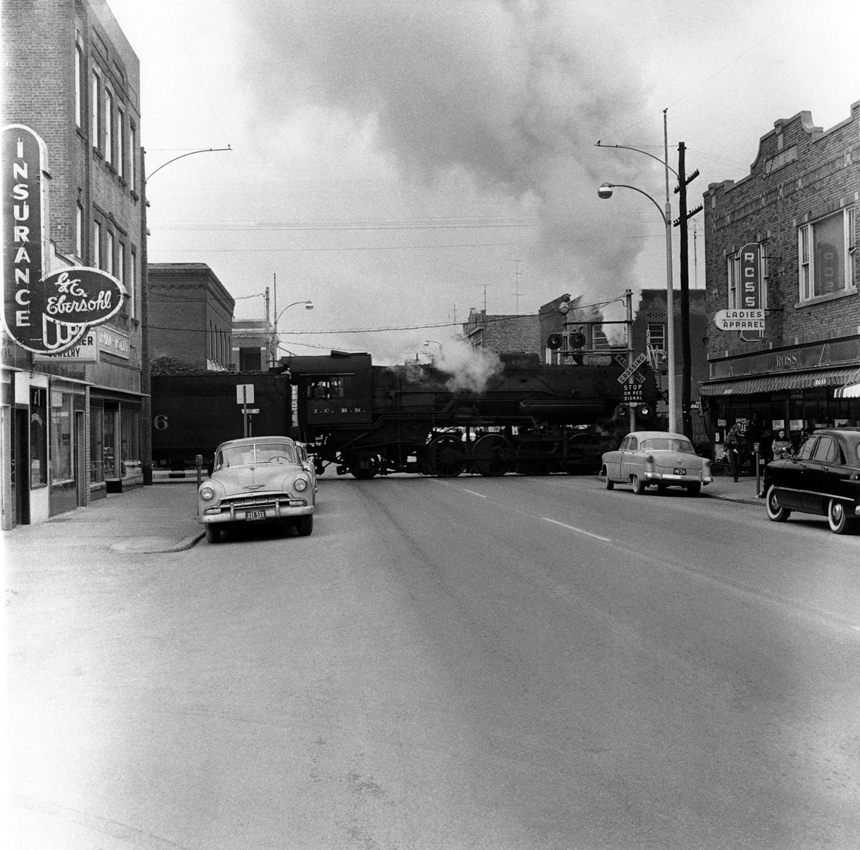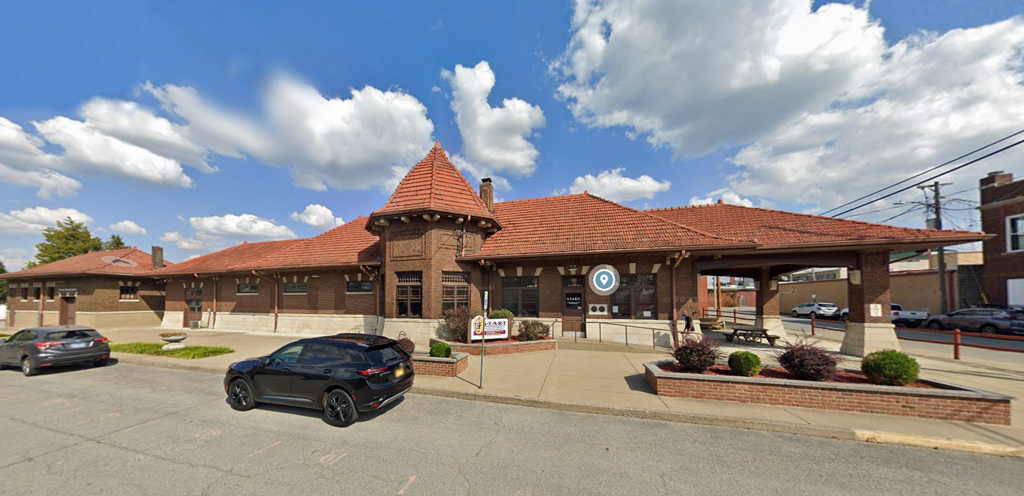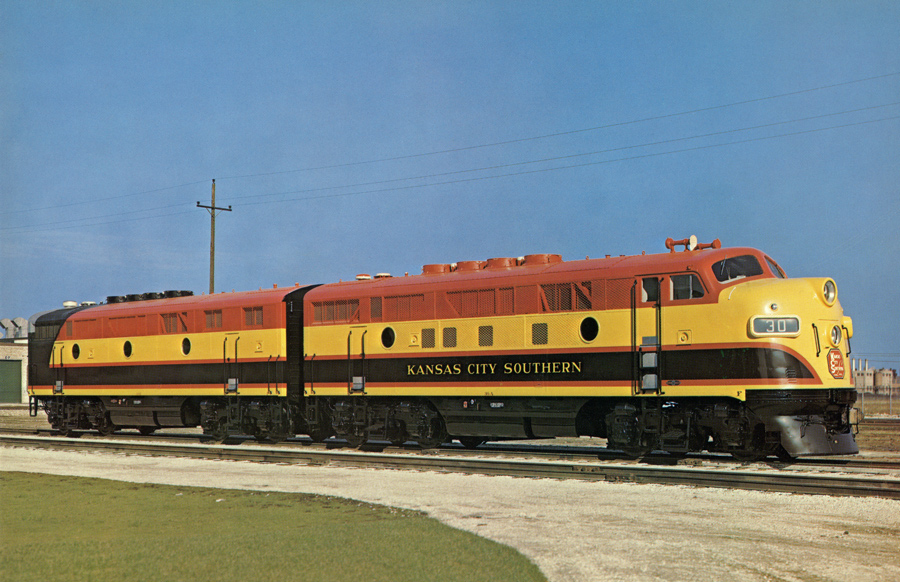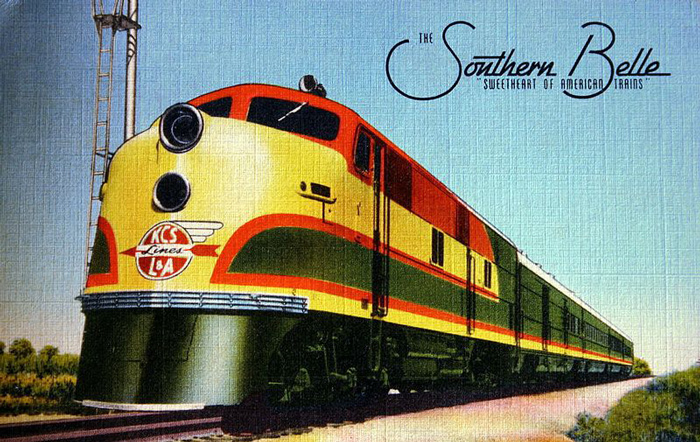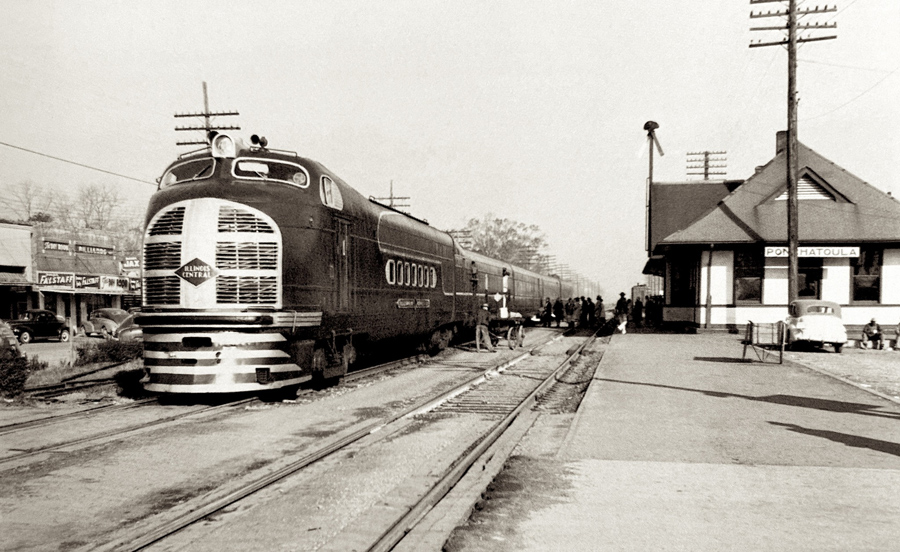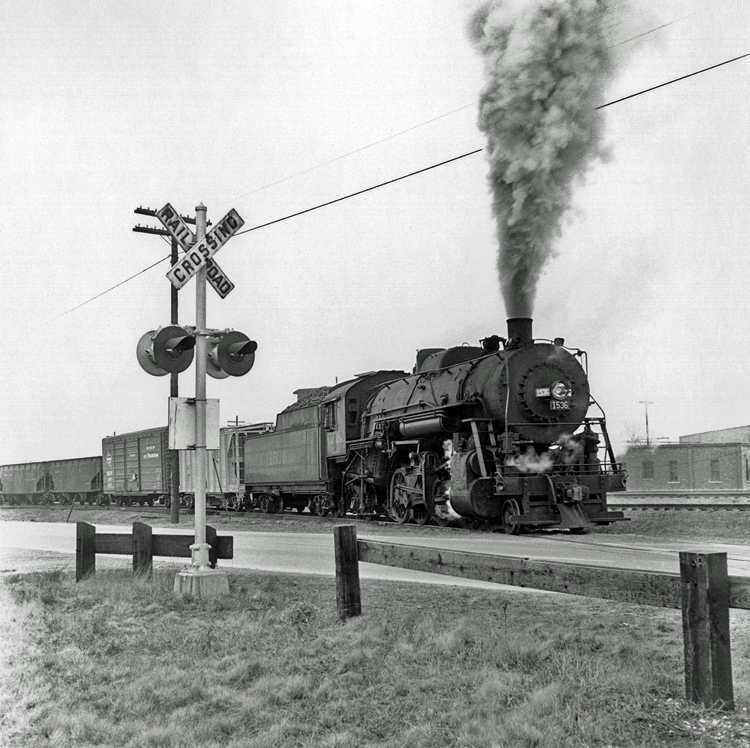Texas & Pacific steamer #712, a 73″ drivered 4-6-2 Pacific appears to be “picking ’em up and laying ’em down” in this photograph taken out on the high iron. As an oil-burner, I’m surprised at the volume of smoke she’s belching out. No, her flues aren’t being sanded . . . the fireman is leaning out of the window giving a wave to the photographer. Perhaps she just crested a grade and hasn’t settled down yet.
A friend long ago showed me this photograph, which really got my interest. So he gave it to me to scan. The image was cut off at both top and bottom, with the smoke plume flattened and the track ending just in front of the pilot. I wanted to make an 8″x10″ print, so using my very limited skills with photo editing, I managed to somewhat round out the top of the smoke, and add more foreground at the bottom (making track was a bit of a challenge). But this allowed me to get the proportions right for the image.
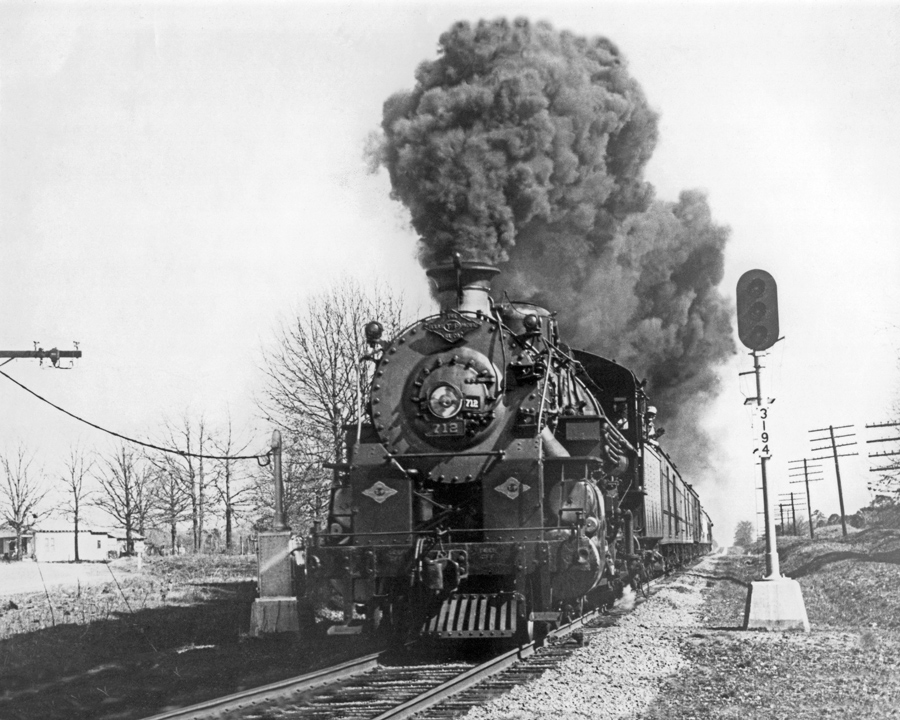
Unfortunately I have no information about the photograph . . . the photographer, location or date. But I’m speculating that the location is either east Texas or perhaps Louisiana. I would guess the time to be in the late 30’s or early 1940. I have also seen photos of this locomotive in New Orleans after it’s 1940 re-build, those dated 1951.

